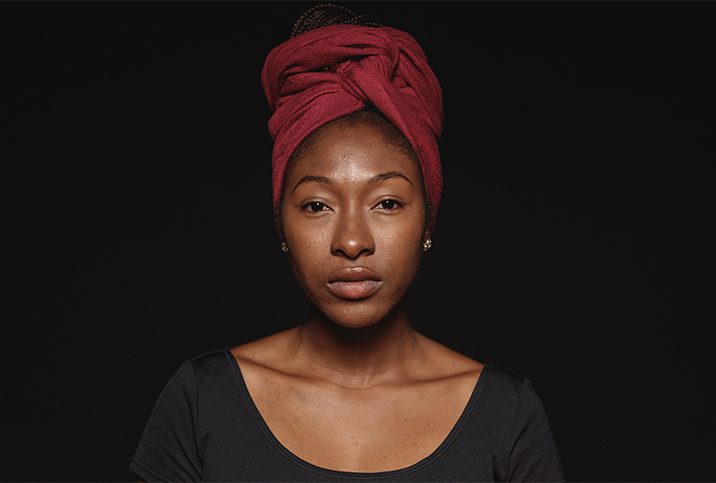Pregnant Black Women Die at Higher Rates in U.S., Study Finds

American women, especially Black pregnant women, are more likely to die during pregnancy today than they were in 1999, according to a newly released study. Black maternal mortality rates have climbed, more than doubling.
There is a widening gap in maternal mortality rates, particularly among Black and Native Americans, suggested the July 2023 study conducted by University of Washington researchers, published in the Journal of the American Medical Association.
For the past 20 years, American Black women have consistently died of pregnancy-related causes at higher rates than their peers, the study indicated.
Among the world's wealthy countries, the U.S. has the highest maternal mortality rate, despite spending the most per capita on healthcare.
In what they're hailing as the first study of its kind to look at state-by-state racial maternal mortality, the researchers compared records spanning from 1999 to 2019 to see how maternal mortality trends varied across different states for five racial groups.
The results are striking: It's much more dangerous to have a baby in the United States if you're Black.
Pregnancy complications of the rich and famous
It seems the latest maternal death rates care little about the socioeconomic status of Black mothers. It doesn't matter if they're rich or poor, pregnant black women are dying at significantly higher rates in the U.S.
The latest research comes on the heels of the high-profile death of Olympic athlete Tori Bowie, 32, who was found dead with her stillborn baby at home in Florida in May. Bowie's sudden death sent shockwaves through the track and field community and redirected attention, at least temporarily, back to the racial and ethnic disparities in America's maternal healthcare.
The Olympic gold medalist wasn't the first prominent Black woman to have a dangerous pregnancy. In 2018, superstars Beyoncé and Serena Williams went public with their near-fatal pregnancy complications.
In 2017, activist Erica Garner died at 27 after she suffered brain damage during a heart attack following the birth of her second child, a son she named after her late father, Eric Garner. The elder Garner's last words, 'I can't breathe,' became the voice of the Black Lives Matter movement.
The American maternal mortality crisis stands in stark contrast to the rest of the world. The overall global maternal mortality rate decreased 34 percent between 2000 to 2020, according to the World Health Organization (WHO).
What causes maternal mortality?
Maternal mortality describes when a woman dies from a pregnancy complication or a health issue exacerbated by pregnancy, according to the Centers for Disease Control and Prevention (CDC).
Some health agencies only record maternal mortality rates up to six weeks postpartum. For the University of Washington study, women were considered a maternal fatality if they died from complications up to one year after their pregnancy.
Almost 95 percent of all maternal deaths in 2020 occurred in "low or lower middle-income" countries, and most were preventable, a WHO fact sheet said. Worldwide, nearly 287,000 women died due to pregnancy-related causes in 2020.
The most common pregnancy complications, according to the WHO, include the following:
- Severe bleeding
- Infection
- High blood pressure during pregnancy
- Delivery complications
- Unsafe abortion
Women living in wealthier countries, with the exception of the U.S., fare better on WHO's maternal mortality ratio. The median maternal mortality rate for high income countries in 2020 was 12 per 100,000 live births.
Generally, the chance of dying during or after childbirth increases as pregnant women age. In 2021, American women younger than age 25 had a maternal mortality rate of 20.4 per 100,000 live births. That number was 31.3 per 100,000 for women ages 25 to 39 and 138.5 per 100,000 for women 40 and older, according to the CDC.
Who fares the worst during pregnancy?
All pregnant women, no matter their ethnicity, are dying at higher rates in America than they did 20 years ago, according to the latest study. For Black women, pregnancy-related mortality more than doubled, from a rate of 26.7 per 100,000 live births in 1999 to 55.4 in 2019, the study revealed.
Maternal mortality rates rose for Asian, Hispanic and white pregnant women over the same time period. White and American Indian women's maternal mortality rate more than tripled from 1999 to 2019, but the number of deaths per 100,000 live births is still lower than for Black women.
Pregnant Black women in the United States died in numbers higher than their peers, the study found. Even though the rates of maternal mortality grew faster for other groups, the "median state [maternal mortality rate] for the Black population remains the highest in the U.S."
Over the course of two decades, Louisiana, New Jersey, Georgia, Arkansas and Texas saw an increase of more than 90 percent in the number of Black expectant mothers who died during or after pregnancy, the study suggested.
The maternal mortality rate increased by the largest margins among indigenous women between 1999 to 2019. The maternal mortality rate of American Indian women rose from 14 per 100,000 live births in 1999 to 49.2 in 2019.
In comparison, between 1979 to 1986, the maternal mortality ratio for American women overall was 9.1 per 100,000 live births, according to a 1990 study.
"Maternal mortality persists as a source of worsening disparities in many U.S. states and prevention efforts during this study period appear to have had a limited impact in addressing this health crisis," the University of Washington study said.
What should the U.S. do about the maternal crisis?
The United States could look to other wealthy countries for solutions to the maternal mortality crisis, as research released in 2020 by the nonprofit Commonwealth Fund indicated.
Among the world's wealthy countries, the U.S. has the highest maternal mortality rate, despite spending the most per capita on healthcare. In addition, while the majority of the world's richest countries guarantee paid maternity leave and postpartum healthcare for new mothers, the U.S. does not.
The wealthiest Western nations—Switzerland, Netherlands, Australia, New Zealand, United Kingdom, France, Canada, Sweden, Germany and Norway—all guarantee at least 14 weeks of paid maternity leave for new mothers, according to the Commonwealth Fund report.
In order to protect pregnant women, and Black maternal health in particular, states must collect and analyze data to fully understand the maternal mortality crisis. But it appears at least one U.S. state does not want to know why maternal deaths are on the rise.
In 2023, Idaho's legislature terminated the state committee tasked with investigating the cause of maternal deaths related to pregnancy, the Idaho Capital Sun reported. In 2020, prior to the state's abortion ban, Idaho's maternal mortality ratio was higher than some low-income countries, with 41.8 maternal deaths recorded per 100,000 live births in the state.
Now that abortion bans are active in 15 states, some women's health experts are concerned preventable complications and pregnancy-related deaths will continue to take the lives of more women unnecessarily in the ever-evolving post-Roe landscape.
"The well-being of mothers and babies should be a top policy priority in all countries," the Commonwealth Fund study said. "In the U.S., where maternal health outcomes are poor relative to many other parts of the world, policymakers and delivery system leaders can examine international models of maternity care to inform strategies for improvement."


















